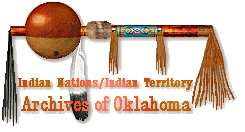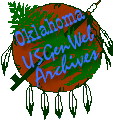 |
Tulsa
County |
 |
| Home |Archives
| Cemeteries
| History
| Lookups
| Queries |
Resources
|Surnames
| Obits |
||
"Links
to web sites that are not part of the USGenWeb Project are provided for
your convenience
and do not imply any endorsement of the web sites or
their contents by The USGenWeb Project."





